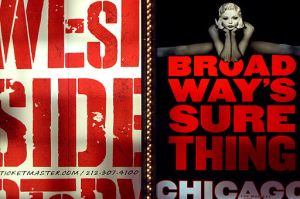 What creates a writing trend? Why, for example, did vampire stories proliferate? Why did urban fantasy become a craze? Why did young adult dystopian fiction become a hot commodity?
What creates a writing trend? Why, for example, did vampire stories proliferate? Why did urban fantasy become a craze? Why did young adult dystopian fiction become a hot commodity?
On the other hand, why were books about faeries rather short lived? Why didn’t pirate novels take off? Why did chick lit have a fairly short shelf life?
The truth is, no one really knows. No one predicted that a series about a boy wizard would become the phenomenal success the Harry Potter books turned out to be. Of course, once a book succeeds, some writers capitalize on the obvious reader interest and look to write something similar, only different, and a trend is born.
By the time most of us recognize a trend, however, it’s too late to join the party. Granted, the Christian market seems to be trailing behind the general market, so agents and editors in the latter may be saying they don’t want any more dystopian or post-apocalyptic fiction, but the former is still interested in acquiring in those genres.
Having said that, it’s a pretty sure bet that a good number of authors have dystopian manuscripts with agents who sell to Christian publishers. In other words, someone who wants to begin a dystopian novel will most likely find by the time he has finished writing and revising that he is too late.
Published authors have the advantage of selling stories based on proposals, but new authors need to finish a book before trying to sell it. This fact alone makes it hard for someone starting out to get ahead of trends, or to arrive when they are hot.
Because of these realities, agents and editors at writing conferences will often answer trend questions by saying, write your passion. I’m sure they mean to be helpful. They know that trend chasing is a dead-end street, and they want to spare newer writers, but “write your passion” is so generic, it doesn’t serve as much of a guideline.
Here’s what agents and editors are looking for: they want something familiar repackaged in the guise of something new.
Harry Potter was, at its heart, a boarding-school story. But it was also a coming-of-age story and it was a story of sacrifice and of good triumphing over evil. And it was about magic. Each of those alone would not have been fresh or new (see Ursula Le Guin’s article “The Critics, the Monsters, and the Fantasists” reminding us that she wrote a story about a school for wizards). By bringing the threads together, J. K. Rowling created a new look, a fresh take on the familiar.
Stephenie Meyer did the same thing with her love triangle/vampire stories. The Twilight series gave readers a good vampire who became the love interest, not the villain. A heroine with two love interests who must decide between them is not a new story, and Anne Rice had been writing about vampires for years, but bringing the two threads together was fresh–was being the operative word.
You see, once it’s been done, doing it again will only feel like copying or “borrowing.”
The thing is, all writers borrow. The most repeated phrase in the writing world, I think, is that there are no new stories. So finding inspiration in what another writer has produced isn’t wrong. The problem comes in deriving that inspiration from something current or currently famous. Those are the stories that acquire the “derivative” label.
By “currently famous” I mean a work that has resurfaced as a popular book, such as Lord of the Rings. Although the books were well known and well read–famous–they became popular again after the first movie in the series came out. A book that now borrows from Lord of the Rings would be spotted at once–as if the veil had been pulled back, showing beneath the thin veneer of the author’s personal input, the original work. The contemporary writer, then, looks lazy at best, and at worst, like a cheat.
 Other stories, such as any of Shakespeare’s plays, may be famous but not currently popular. Writers might find inspiration in any of those. Romeo and Juliet apparently was just such an inspiration for Arthur Laurents’s West Side Story (see “West Side Story”.
Other stories, such as any of Shakespeare’s plays, may be famous but not currently popular. Writers might find inspiration in any of those. Romeo and Juliet apparently was just such an inspiration for Arthur Laurents’s West Side Story (see “West Side Story”.
So what does that mean for a writer who wants to begin a new work? I think there are some specific guidelines that might be helpful.
1. Find inspiration from something that is not current or currently popular.
2. Put a new face on the story you want to tell.
3. Do so by reworking the story to fit the genre of your choice. West Side Story was a contemporary story about star-crossed lovers, not a remake of Shakespeare’s medieval tale.
4. Look for ways to twist the original. Seth Grahame-Smith did this with his mashup, Pride and Prejudice and Zombies. (Mashups, by the way, became a short trend that quickly burned out).
5. Twists should be unexpected and uncommon. “The pauper orphan is in reality the lost prince” has become a predictable and common twist. What could be true about the pauper orphan instead? Love triangles have been done and redone, but perhaps there’s room for one more twist. What would be an uncommon element in a love triangle? Murder mysteries from Colombo to CSI have been told and retold. Is there some way to turn the basic story on its head one more time?
These are the guidelines an author should follow rather than chasing existing trends. Hopefully she’ll be passionate about the story which serves as her inspiration and about the twists she wants to introduce. So, yes, write your passion, but do so with an eye to creating a trend of your own rather than following the ones already out there.


![PowerElementsCharacterDevelopment[1000][1]](https://rebeccaluellamiller.files.wordpress.com/2015/05/powerelementscharacterdevelopment10001.jpg?w=205)





